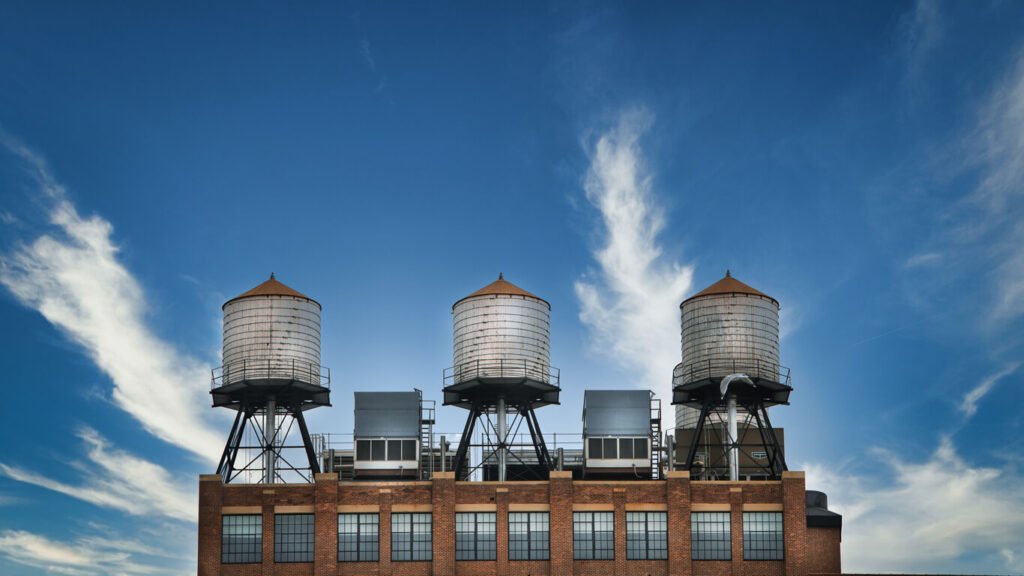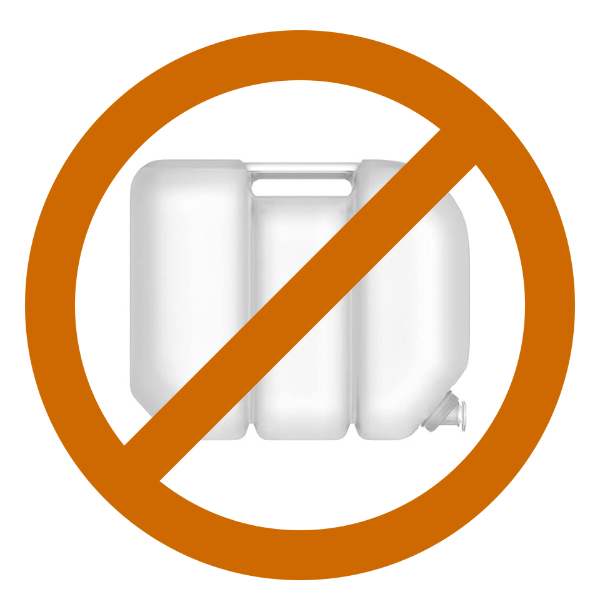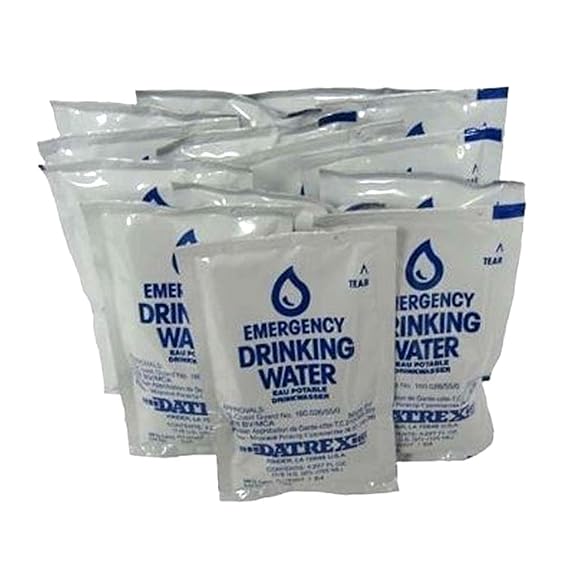The greatest game changer for civilization is plentiful running water. Even in our modern world, one of the biggest differences between the first world and the third world is plentiful, clean water on-demand. If you can wash your hands before touching food, you dramatically reduce food-borne illness. If you can wash your body after working, you minimize the number and kinds of microbes and contaminants you’re bringing into your home environment. Even though it’s not as exciting as digging a bunker or putting together a Bug Out Bag, prepping water storage shouldn’t be an afterthought. Learning how to store water at home for emergency use might be the single most important prep you make for you and your family.
Why Do I Need Water Storage?
Imagine going just one day without access to water – your body begins to weaken, your mind fogs, and soon, dehydration sets in. After 24 to 36 hours without water, your body starts to shut down, and after 3 days, it will fail completely. Who will take care of your family then? If the water delivery infrastructure breaks down and you haven’t made the necessary preparations, you’ll be left scrambling – trying to dig water out of the ground, or walking miles to the nearest above ground source.
But it’s not just about immediate survival. Having a reliable supply of water protects your family’s health and well-being, both for drinking and basic hygiene. Every hour spent getting a bucket full of water down at the river is an hour you can’t use to care for your family, improve the homestead, or rebuild your society. When you make preparations for water storage ahead of time, you free yourself to focus on what matters most – building a secure future for your family – when your time is the most precious.
Prepping forces us to rethink the systems we take for granted. Have you ever stopped to consider what keeps your home’s water flowing? When planning for a possible disaster, you need to think about how delicate your this system really is, and how quickly it can fail. Here are some questions to get you started:
- What does your municipal water system look like?
- Does it depend on seasonal sources?
- Do the pumps that bring it to your homes rely on steady electricity?
- Are there backup generators to keep it active during a power outage?
- Do you have local water towers, that will continue to deliver water via gravity?
- How long till these supplies run out?
- Could an ice storm or earthquake affect the water supply to your home?
- How long would broken pipes take to repair?
These are critical questions to ask now, before disaster strikes, so you can prepare your family’s emergency water storage and protect them when it matters most.

How Much Water to Store for Prepping
How much water to store depends on what type of emergency you’re planning for. If you’re only planning for a short-term disaster, such as an evacuation or a multi-day power outage, where basic services are mostly functioning and some stores stay open, you probably only need a few days to a week’s worth of water. With portable pre-packaged containers, like emergency water pouches, you can stay flexible and mobile.
For more severe outages in a city or suburb, a good target to work towards is prepping two weeks of water per person, which will prepare you for anything short of the apocalypse. That’s 70 gallons for a family of five, (5 people * 1 gallon per day * 14 days) in a combination of portable pre-packaged and smaller 3-5 gal. bulk storage containers.
If you’re planning on a breakdown in civil order, or a grid down emergency, or any situation lasting longer than two weeks, you should have a clear execution trigger for getting out of town with a solid, well-thought out plan. Your plan will include bringing some of your portable water storage, as well as a filter/water purifier, to ensure you make it to your pre-designated relocation destination that has adequate water storage in large bulk containers, and ample long-term access to additional water supply.
If you’re just getting started on your preparedness journey, it’s easy to feel overwhelmed. Start today by starting small and accept that it’s a process. You’ll work your way up the preparedness ladder, making prioritization decisions along the way that are appropriate for you and your family.
How to Preserve Water for Storage
First make sure you have a food safe material, glass, metal, or food-grade hdpe. (High density polyethylene) Clean the container well, but make sure no soap or other cleanser is left behind. If you have a clean municipal water source, (i.e. if you would drink a glass from the tap without anxiety) it is already treated and you probably don’t need to sanitize it. If your water is known to be impure, e.g. from a well, pond, or lake or other groundwater source, then use a long term water storage bleach ratio of around 1/4 teaspoon of unscented liquid bleach per two gallons. (There are many different amounts recommended by different authorities, I chose this as a middle of the road amount that is easy to calculate and uses a common measuring spoon size. The point here is to sanitize it before it sits around growing life inside your storage containers.) Make sure the lid is tightly sealed, mark your container with the date, and put it in your storage location.
If you have water contamination issues from industrial/agricultural waste, you need to purify your water first, which is beyond the scope of this article. The “reverse osmosis” style water filters are the best at mitigating heavy metals and pesticides/fertilizers, but you’ll need to do your own research.
Rotate out your stored water every year or so, mostly to confirm that the water is fresh and safe for drinking, that there isn’t a hidden source of contamination in your storage process, and check that it’s easy to access the water in your storage if you ever need to.
Emergency Drinking Water Storage
Pre-bottled/Pre-packaged
For small amounts of portable water, pre-packaged solutions are very helpful. They’re great for carrying with you when you don’t know what is going to happen next. A tempting first step to preparing your family for disasters is to get a couple of cases of plastic water bottles, but I recommend the survival water pouches instead. Plastic bottles break down faster (1-2 years, vs 5 for the pouches) and are awkward and noisy inside a backpack, which is why I recommend the pouches in our 72-hour go bag list. They’re great for bringing with you when you don’t know what is going to happen next.
Small Containers
The next step up from pre-packaged water is small, semi-portable, bulk water containers. 3-5 gallons in volume, made from super durable, food-safe HDPE, they are good for long-term disaster prep for an ice storm or sheltering for up to a week or two, but still portable enough to pack in the car when you’re ditching your home due to an emergency. For my family, I chose the stackable 5.5 gallon size, since I feel comfortable with fewer, heavier jugs, and I don’t want to lose too much storage space. I would have liked the ones with the dispenser spigot, but I have too many small curious things running around my home and don’t need one more thing for them to get into.

Containers, Emergency Water
Storage for Camping and Disaster
Preparedness, 20 Gallons
Also, watch out for the “dispenser jugs” of bottled water at the grocery store, I’ve had several fail.

Rain Barrel
An option a lot of people like for backup water, and which is especially good for feeding your plants if the water stops working, is a rain barrel. I live in Oregon, so catching rain is a slam dunk for us, but even so, the water must be handled really carefully for human use, as you pull in a lot of contaminants in the rain capture process. (roofing materials, bird poop, airborne microbes, etc) Be sure to sanitize and filter anything you’re going to consume.
House Water Storage
For accumulating larger quantities in your home base, the 55 gallon or larger water storage tanks amazon or tractor supply sell will help you set up a system that will last for a few months of regular consumption. This is water that you plan to use in place, there’s no convenient way to move this amount to a new location. Be aware, you will either need a drain at the bottom, a pump at the top, or a large enough access hole for dipping to get the water out. I am not using large holding tanks at home yet, but I like these ones:

Stackable Design Utility Water
Tank with Large Cap for Easy
Filling and Spigots, Blue
The Practical Limits of Water Storage
Water is the primary constraint of all human survival. Just thinking back on the various homes I’ve lived in, I would guess the range of possible storage space allocated to water would be from 10 gallons in the closet of a small 3rd story apartment, up to 200 gallons in a garage or full basement. For a family of 5 with a dog, that’s only a little over a month. Sure, some people are prepared for a while longer, but at the end of the day, without the ability to refill, you will run out of water. What happens next, after you’ve exhausted your water storage? As far as I can tell, the only realistic solution is to start planning on a backup location with a reliable water supply, and develop a plan to get there when the emergency happens.
Conclusion
Like many prepping subjects, water storage is something that you can build up incrementally. Start small, with portable water for your Bug Out Bags, and work your way up to bulk water storage containers in a location that is clean, dry, cool, and out of the way, but easy to get to when needed. While it might not be the sexiest prep topic, it is actually the most important first critical step if you’re serious about protecting you family. Establishing reliable water storage is the foundation of preparedness – and it’s the first step toward being the hero your family will depend on in a crisis.





